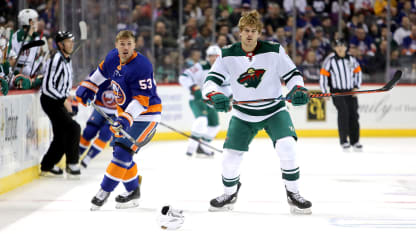"When you get into a big game, it's important which side of the puck is going to be dropped on," NHL senior executive vice president of hockey operations Colin Campbell said. "Washington, for example, with the one-timer from (Alex Ovechkin), it wants the puck dropped in the right side of the end zone. These things come to a head in the playoffs, in key games.
"Our guys were overwhelmingly in favor of this."
The GMs were also in favor of recommending a rule change to keep the face-off in the end zone when a puck is shot out of play by an attacking player. The face-off is now held outside the end zone if a shot by the attacking team goes out of play without touching anything.
"It's just another small change along our whole objective of trying to help the offensive aspect of the game," Campbell said. "Why take the face-off outside the blue line? There are a number of other rules that keep the face-off in the end zone. This one goes outside. Why?"
In addition, the GMs are recommending countdown clocks be added in the corner boards in all arenas to show time remaining in a period and a penalty. They were used in the 2019 Bridgestone NHL Winter Classic and the 2019 Coors Light NHL Stadium Series, and in three exhibition games.
"It was really good. I liked that a lot," Rutherford said. "The visiting team is always trying to find where the clocks are. This is better for the players."
The GMs are also considering a recommendation to prevent teams from changing lines if their goalie freezes the puck on shots that come from outside the blue line. The emphasis is on pace of play and keeping the game moving.
There are 22 stoppages per game because of the goalie freezing the puck. Each stoppage averages roughly 30 seconds.
Campbell said some GMs said it should be a two-minute penalty if a goalie freezes the puck on a shot that comes from outside the blue line, but there is hesitation on going that far.
"Our pace of play is pretty good compared to other sports, but anything we can do to make it better we're going to do that," Rutherford said. "There are going to be some cases where the goalie has no other choice, but there are cases when he's just trying to slow the play down."
The GMs discussed the possibility of cutting power plays down to one minute in overtime for certain infractions, but it didn't generate enough interest.


















